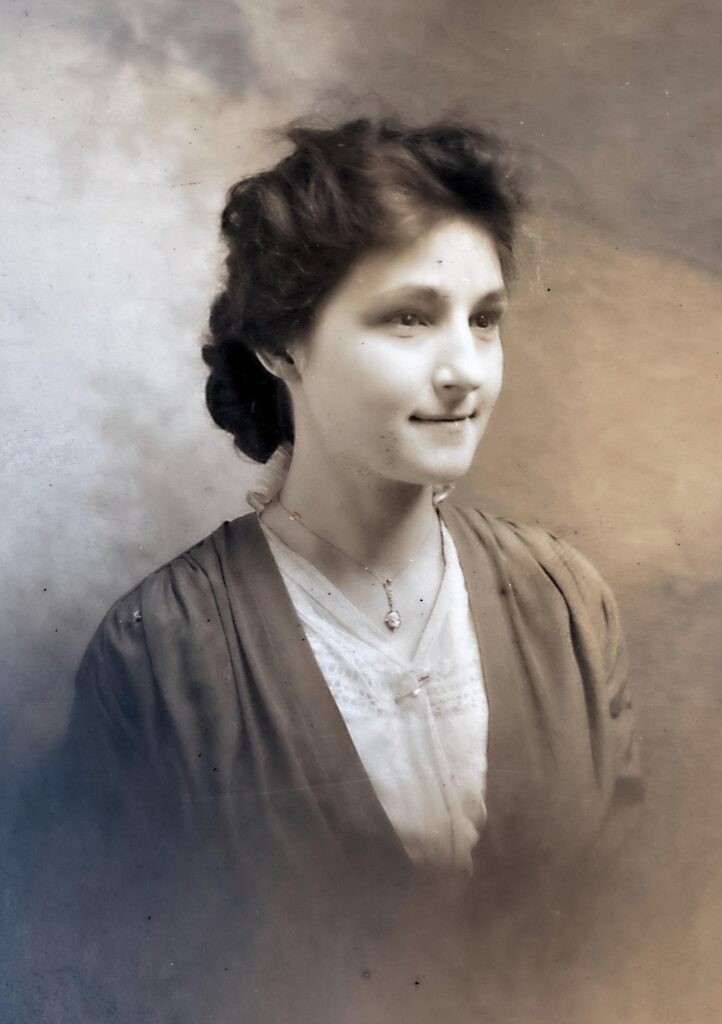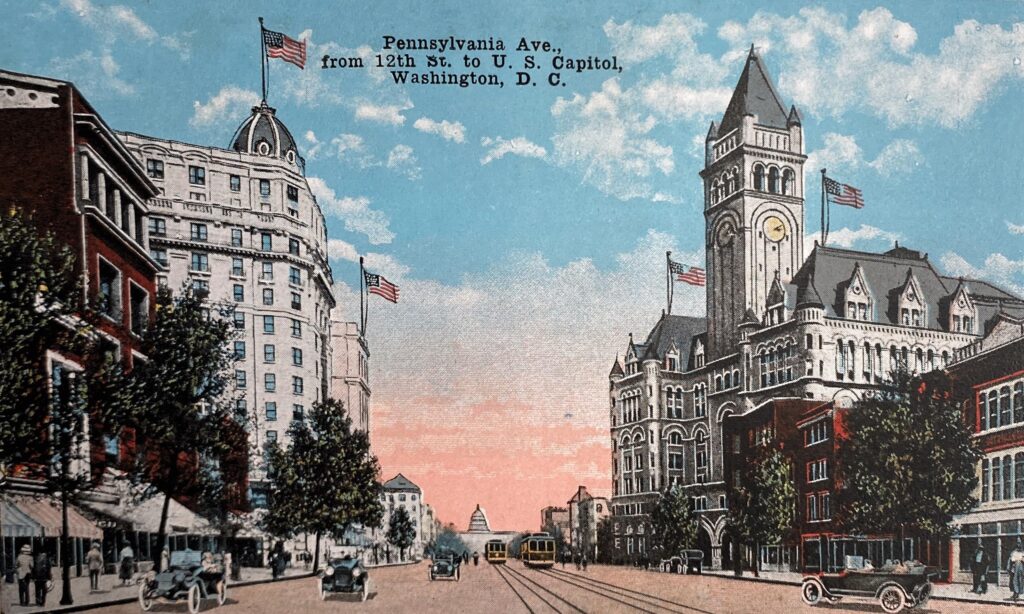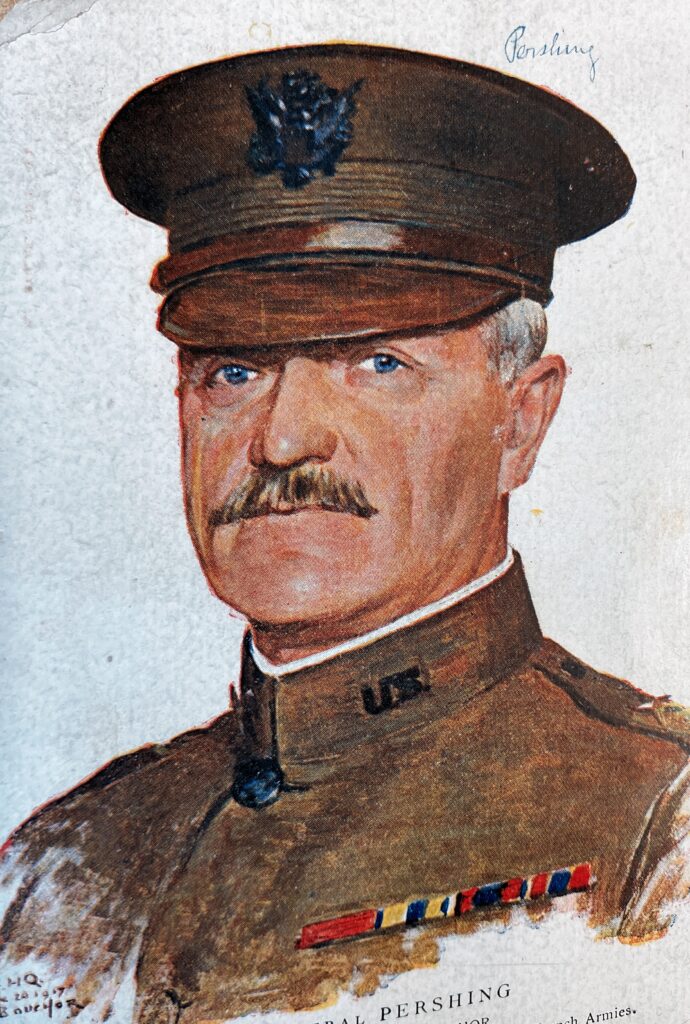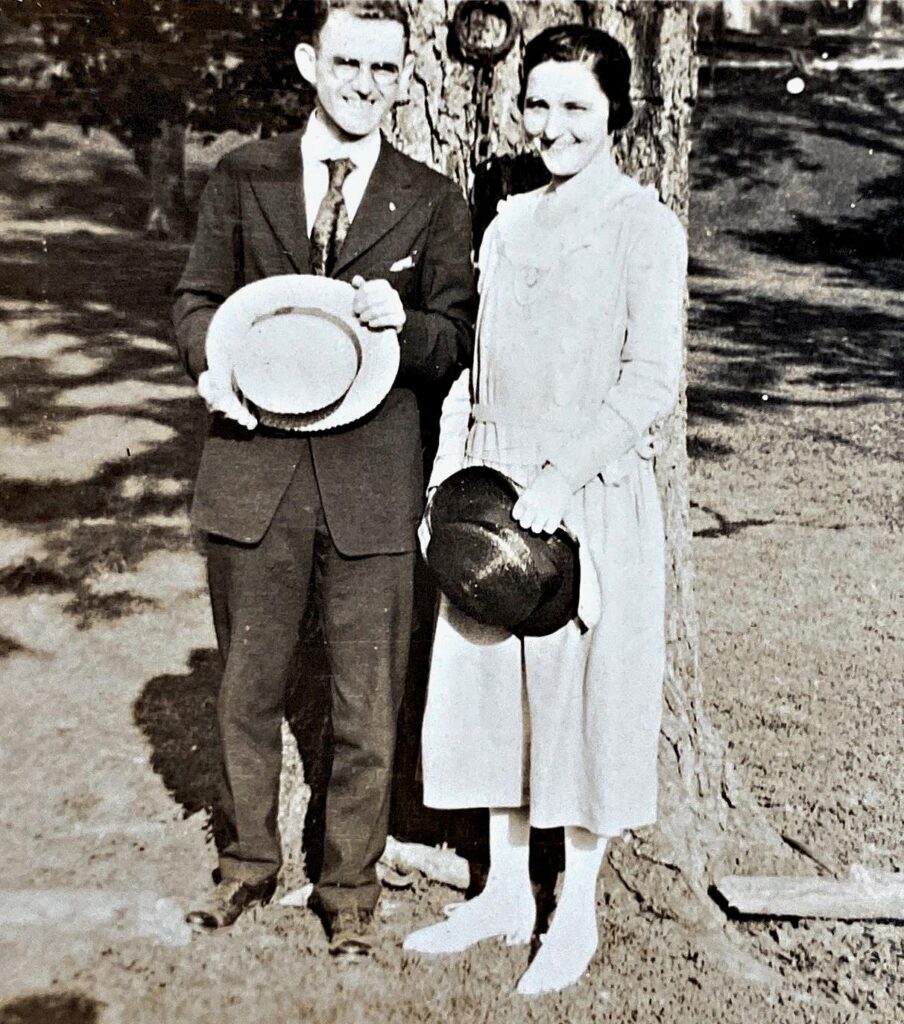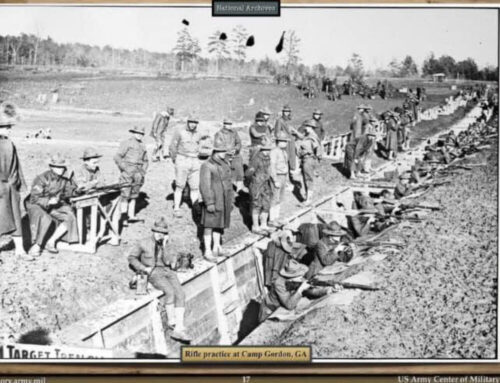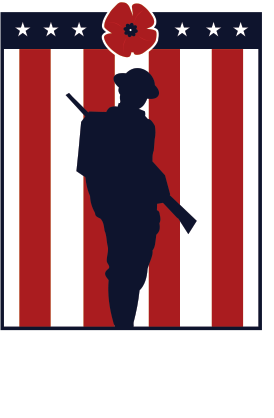My Dear Mabel: A book containing the World War I letters written between two patriots from East Tennessee
Published: 14 November 2025
By James Hawk
Special to the Doughboy Foundation website

My Dear Mabel header 3
On Thursday, July 10, 2025, Daily Taps at the National World War I Memorial was sounded in honor of my grandfather, Private Roy Hawk, U.S. Army, Sixth Infantry Division (1918-1919). While watching the bugler find his spot below the American Flag on a warm summer evening, I gratefully remembered the countless hours I spent with letters written by Roy Hawk and Mabel Ruth Thornton, my grandparents, between 1917 and 1919.
Roy Hawk was an East Tennessee merchant turned soldier. Mabel Thornton was a Knoxville farmer’s daughter turned Washington, D.C. “war worker.” Their story played out during The Great War, which the United States joined with all her might in April 1917, three months after the two met and then began corresponding.
While they answered their country’s call during The Great War, their century-old letters offer proof of their steadfast and courageous service.
I remembered my grandfather’s letter to Mabel dated October 21, 1918, written from his censor-pleasing post “Somewhere’s in France.” The Army private reported hearing Taps while in a “village…a few miles from any front”:
The bugler just blew Taps. My, if I didn’t turn my thoughts back to the states. Do you ever hear Tattoo and Taps blown?
When I arrived here I heard the call of a bugle for the first time for six weeks. For this was how long you are on the front and in the trenches. When there, we had the large guns to blow Reveille and Taps for us.
When the somber bugle call ended and the bugler in his Doughboy uniform saluted down Pennsylvania Avenue toward the United States Capitol, I recalled my grandmother’s euphoric letter written to her soldier in France two days after the Armistice was signed on November 11, 1918:
Oh yes, the war is really over and the entire U.S.A. is rejoicing.
…
Washington gave one grand celebration for the close of the war, Monday night. I don’t think Pennsylvania Ave. can relate such a scene in its history again. I am not exaggerating when I say every foot of space was occupied with machines, street cars, and people, and I think the atmosphere was filled all the way to Heaven with praises, horns, and whistles. I am glad I can say I was here, and you were “Over There”, in years to come. I was just across the street from President Wilson, and saw him view the grand parade. It thrilled me to see the vast number of soldiers salute him as they passed up.
Mabel’s November 13, 1918, letter may have passed Roy’s November 8 letter somewhere on the Atlantic Ocean. Three days before the end of the war, using American Y.M.C.A./American Expeditionary Forces stationery, as a weary doughboy, Roy wrote to “My dear Mabel” from “On The Front”:
Mud–Why I am made out of it…I have been marching through mud and water over my shoe tops for days. Also, I have been sleeping, standing with my pack on my back, pitching my tent in mud while raining in pitch dark… Day before yesterday when we halted for a few minutes, I had taken my mirror out to see how I looked. Although I was muddy, I was able to smile.
For the past week I have seen and heard things that people would think impossible.
Mabel dear, I am making history which will be passed down to the generations to come. It seems like a passing dream.
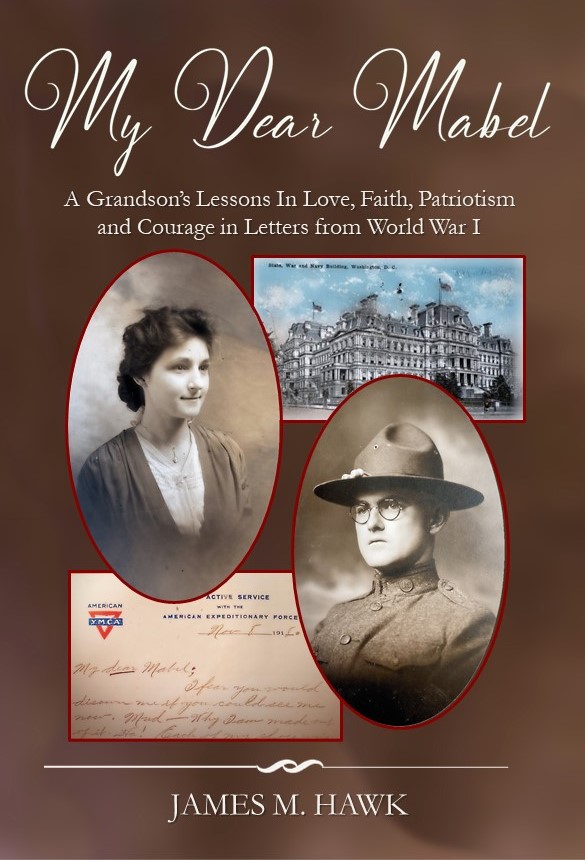 When my dad died in 2018, I discovered these letters and hundreds more. The letters were in their original envelopes, bundled in twine, and packed away in a closet. I picked a random letter from one of the bundles. The letter to “Dear Miss Thornton” was written with a fountain pen on plain stationery during the first months of their friendship, when formality prevailed. I immediately knew that I was not just reading family history, but American history.
When my dad died in 2018, I discovered these letters and hundreds more. The letters were in their original envelopes, bundled in twine, and packed away in a closet. I picked a random letter from one of the bundles. The letter to “Dear Miss Thornton” was written with a fountain pen on plain stationery during the first months of their friendship, when formality prevailed. I immediately knew that I was not just reading family history, but American history.
After spending many hours with the letters, which were uniformly written with care, I decided that I could not merely keep the letters safe and secure. I felt compelled to write, to share their true American love story. In 2022, I self-published My Dear Mabel A Grandson’s Lessons in Love, Faith, Patriotism and Courage in Letters from World War I.
In the book’s Preface, I wrote the following: “The Lessons in the subtitle refer to lessons learned and experienced by the author. I am hopeful that my three sons may learn a thing or two from the writings of their great grandfather and great grandmother.”
These letters tell of one soldier’s mental and physical preparation for war, and of the Doughboys’ commitment to victory “Over There.” These letters give eyewitness account of the hardships that the American soldiers in France had to endure in pursuit of that victory. And these letters recount the delirious celebration of the people in Washington, D.C. when the war was won.
These letters tell of the lives of two young patriots whose future happiness was inextricably tied to the dangerous and worrisome events of an era. After successfully courting in cursive, Roy Hawk had to survive muddy trenches and a war. Mabel Thornton had to survive the Spanish flu outbreak in Washington, D.C. and oppressive worry, both of which she wrote about in her letters.
At one level, the letters are love letters to the U.S.A., the American flag, and Roy’s “dear old Tennessee,” which he wrote of while experiencing a pang of homesickness while in France.
Mabel reported the scene she witnessed on Pennsylvania Avenue at the end of the war: “The people were so happy, they were hysterical. From every machine flowed an American flag, and most every person was waving one [and] singing…
I believe that the war-era writings of my grandparents carry timeless lessons and inspiration. By the time I finished reading all the letters, I understood what my grandfather meant when he wrote to Mabel from France on March 1, 1919, while waiting to return home: “I claim these letters have life.”
My Dear Mabel presents the edited letters in chronological order. In his early letters to Mabel, Roy wrote about the subject of war. His letters reveal that he was episodically tormented by the thought of war. He went on to write about his motivations to volunteer and put on the uniform of his country at the age of twenty-five. And then Roy wrote from Fort Oglethorpe in Georgia while training in the spring of 1918. In those letters, Roy seemed to delight in his new status as a soldier, and in the rituals and obligations of camp.
Before passing the Statue of Liberty on a steamship in July 1918, he wrote to Mabel, “I have never asked you to discontinue addressing my letters from “Mr.” to private, ‘Pvt.’ But do[.] I am a soldier now.”
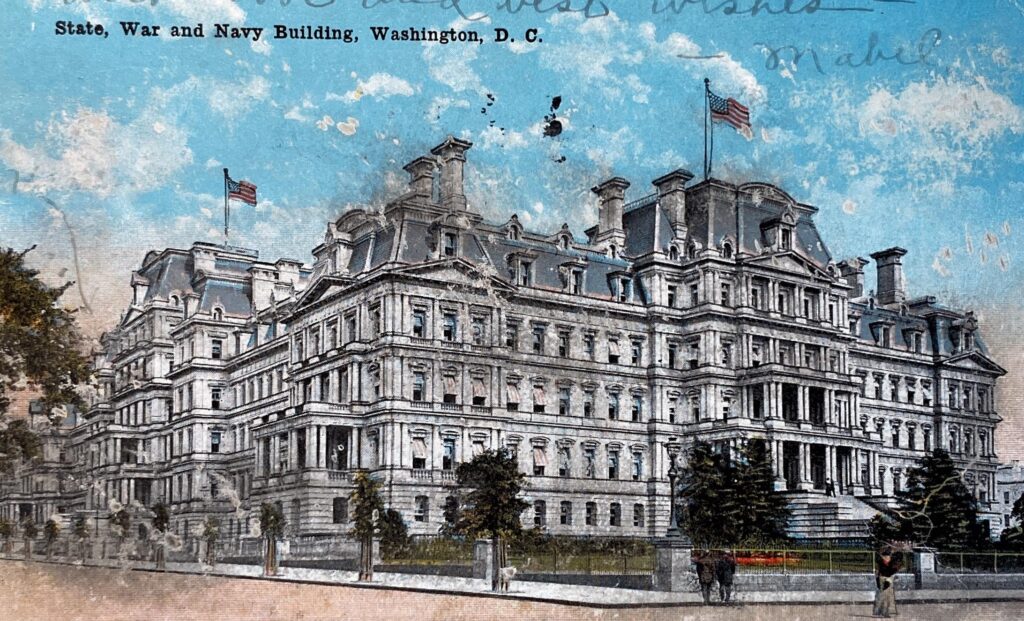
Postcard of State, War and Navy Building–Mabel worked in this building as a clerk in the War Department.
In the spring of 1918, Mabel wrote of her decision to take the Civil Service Examination with the goal of working in Washington, D.C.: “This takes nerve but I am going to do it…” When she passed the examination, Mabel received a Western Union Telegram from the Adjutant General’s Office, War Department. She accepted the job of clerk. Though her parents did not want her to go, Mabel was determined. She wrote to Roy in France while she was travelling by train to Washington, D.C., on September 13, 1918: “I wasn’t satisfied doing nothing, with you working so hard and undergoing so many hardships [and] I teased them at home by telling them I was going to Washington and end this war. Ha!”
During the peaceful months after the war, Roy wrote dozens of letters to “My dear Mabel” and each letter, sent as “SOLDIERS MAIL” without a stamp, hit its target: a row house near Union Station. A thirty-block walk to her office at the State, War and Navy Building next to the White house, Mabel’s address was a house that she shared with other “war workers.”
Roy and Mabel took the time to reminisce in their letters after the war’s end. But they devoted equal time to plan for their future—in marriage. Of their future home, Mabel declared on January 12, 1919: “I know it is going to be the dearest place on earth.” My book is dedicated to the two sons of Roy and Mabel who grew up in that home envisioned by Mabel. Both men served their country in uniform.
When I wrote My Dear Mabel and when I submitted Roy Hawk’s “Story of Service” on The Doughboy Foundation website, I wanted to share the story of an extraordinary Army private. I also hoped to inspire anyone who may have letters, or diaries or other written accounts committed to posterity by a family member who served during the war. I hoped to inspire someone else to write the story of their relative’s service.
While I was at the National World War I Memorial for “Taps” on July 10, I thought about Private Hawk’s written remembrances of his fellow soldiers who did not make it home. While recovering from debilitating dysentery after the war ended, Roy wrote from Ward 9 bed #23 at the massive Mesves Hospital Center. Roy told Mabel about his November 17 “sight-seeing walk [near Verdun]…over one of the worst shell-scarred battle-fields in France.” He wanted Mabel to know: “There I got to see the junk heaps caused by war. There I saw, for the first time, my comrades who had paid the greatest sacrifice of democracy—their lives.”
On The Doughboy Foundation website, we are reminded that 4.7 million Americans joined the Armed Forces to serve during the war. Their service, collectively, will never be forgotten. But unfortunately, many of the individual stories of service cannot be recalled.
My grandparents’ story is doubtless similar to thousands of other stories of like-minded and like-motivated American men and women who lived through and together won “The Great War.” Yet, their story is unique. And, thankfully, their story is not lost to time.
 James M. Hawk is an attorney and author in Washington State. A Navy brat, James completed first grade on the island of Oahu and graduated from Forrest Sherman High School in Naples, Italy.
James M. Hawk is an attorney and author in Washington State. A Navy brat, James completed first grade on the island of Oahu and graduated from Forrest Sherman High School in Naples, Italy.
The original letters and postcards contained in the book My Dear Mabel are now housed at the McClung Historical Collection, Knox County Public Library, in downtown Knoxville, Tennessee.
My Dear Mabel is available as a paperback and an eBook on Amazon.
External Web Site Notice: This page contains information directly presented from an external source. The terms and conditions of this page may not be the same as those of this website. Click here to read the full disclaimer notice for external web sites. Thank you.
